Did you know that many kids today find writing a bit challenging? In fact, studies show that lots of children struggle with putting their thoughts into words. But guess what? We have some super fun and exciting ways to help them become amazing writers!
Math & ELA | PreK To Grade 5
Kids see fun.
You see real learning outcomes.
Watch your kids fall in love with math & reading through our scientifically designed curriculum.
Parents, try for free Teachers, use for free
We’ll show you how writing activities will make your kids love writing, just like they love their favorite games and toys.
But why is this important? Well, teaching kids to write is not just about school—it’s about expressing yourself, telling stories, and sharing ideas. Plus, it’s a skill that will help them in so many areas of life. Let’s dive right in and discover fun writing activities for kids that will light up their imaginations and help them become confident writers!
Related Reading: How to Improve Handwriting: 10 Easy Tips for Kids
12 Fun and Creative Writing Activities for Kids
Writing can be as exciting as a treasure hunt or a fantastic adventure, and it doesn’t have to feel like homework. Here are some ways on how to practice writing:
1. Online Writing Games
In today’s digital age, engaging children in learning can be both fun and educational. Online writing games are an excellent way to foster creativity and enhance writing skills in kids. One such platform that excels in this regard is SplashLearn.
SplashLearn offers a wide array of interactive games and worksheets designed to enhance kids’ writing skills. From letter tracing activities that help strengthen fine motor skills to engaging sight word games that boost reading and writing proficiency, SplashLearn transforms writing practice into an engaging and rewarding experience.
2. Feelings Journal
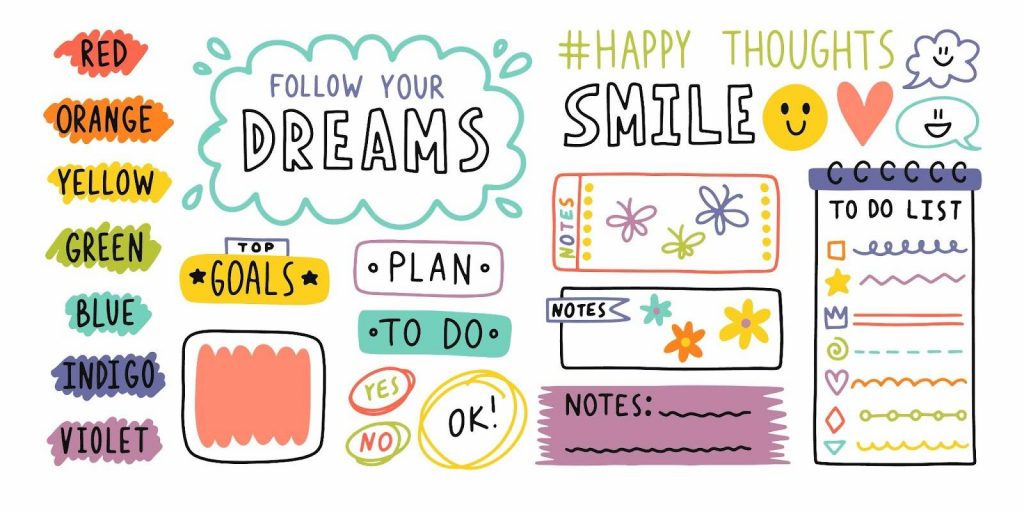
A journal is like a secret friend where kids can pour out their thoughts and feelings. This writing activity is a safe space for self-expression and emotional growth.
Ideas for journaling:
- Ask them to write about their favorite day.
- Let them draw or stick pictures to make it even more personal.
Benefits:
Keeping a journal is like having a personal therapist on paper. It aids in emotional development by encouraging self-reflection and expression of feelings. Additionally, it hones writing skills, vocabulary, and the ability to organize thoughts coherently.
3. Personal Time Capsule Letters

The idea of a time capsule is to capture the present moment for the future. In this activity, kids write letters to their future selves, detailing their current lives, hopes, dreams, and questions they might have for their older selves.
How it works:
- Provide kids with paper, envelopes, and writing tools.
- Ask them to imagine they’re writing to themselves 5 or 10 years in the future.
- They can describe their current life, friends, hobbies, and dreams.
- Once done, seal the letters in envelopes with the date to be opened in the future.
- Store them in a safe place or create a decorative time capsule box.
Benefits:
Writing to one’s future self is a reflective activity that encourages introspection. It helps children articulate their current feelings, aspirations, and uncertainties. As they ponder what the future might hold, they also develop a sense of hope and anticipation. When they eventually open these letters years later, they can see how much they’ve grown, which can be a profound and emotional experience.
4. Use Creative Writing Prompts

Imagine starting with a simple sentence and turning it into an amazing story! That’s what creative writing prompts do—they make writing an adventure.
Examples of prompts:
“If I could go anywhere in the world, I would visit…”
“Once, I found a magical key that opened…”
Benefits:
Creative writing prompts spark imagination and creativity. They prompt children to think outside the box and develop their unique voice. Additionally, it improves their storytelling abilities and vocabulary.
5. Picture Storytelling
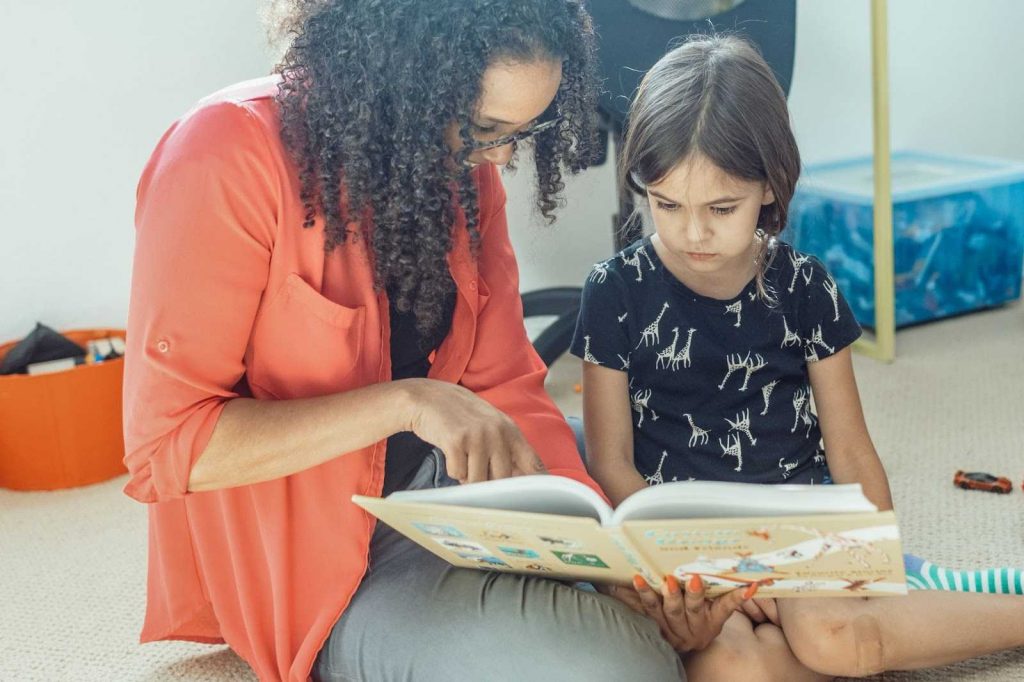
Pictures can speak a thousand words, and when kids write about them, they learn to describe things in detail.
Picture-based prompts:
Show them a picture and ask, “What do you see? Write a story about it.”
Benefits:
Describing pictures in detail improves observational skills and the ability to convey ideas clearly. It encourages children to think critically about visual cues and translate them into written narratives.
Related Reading: Storytelling for Kids: Benefits, Books, and More
6. DIY Comic Strips
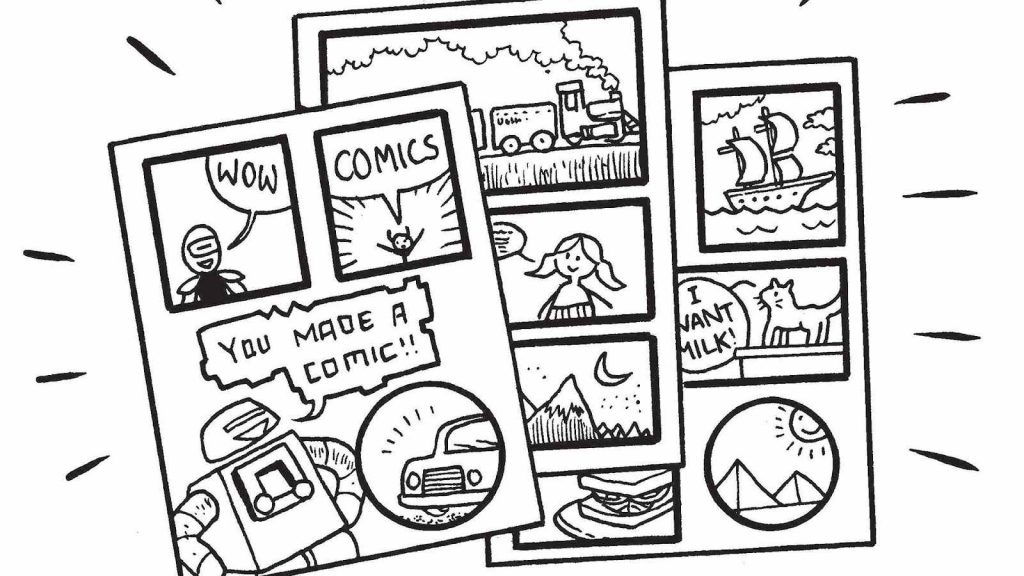
Creating comics is like being a superhero! Kids get to draw, write, and think about how stories flow.
Step-by-step guide:
- Draw a series of boxes to make panels.
- In each panel, tell a part of the story with words and pictures.
Benefits:
Creating comic strips nurtures artistic and storytelling talents simultaneously. It teaches visual storytelling, enhances writing skills in a concise format, and encourages the creative interplay between words and images.
Prompt:
“What’s a funny incident that happened to you recently? Try turning it into a 3-panel comic strip!
7. Outdoor Observation
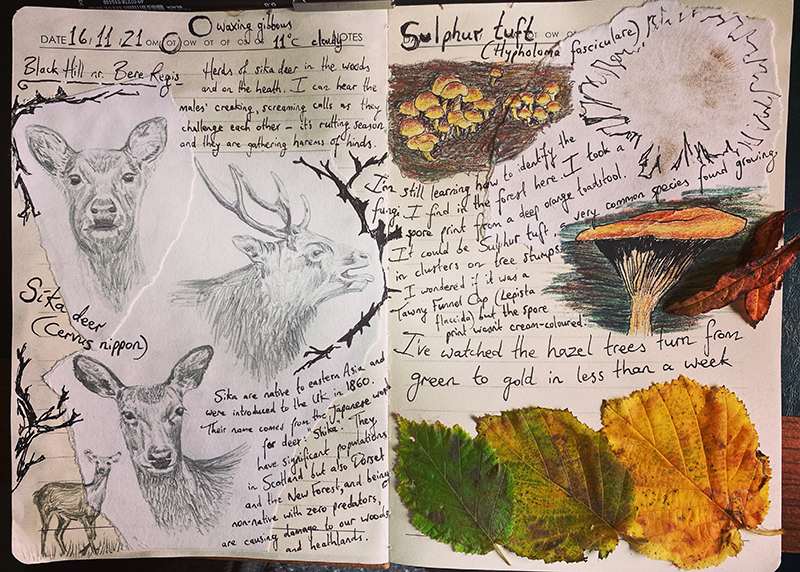
Writing about nature connects kids with the world around them. It’s like taking a walk in the park with a pen.
Outdoor observation prompts:
- “Create an alphabet list using things you see in nature. For each letter, write the word of something you found, and describe it in one sentence.”
- “Draw your favorite tree and write about it.”
- Pick up a fallen leaf and make up a story about where it came from, the tree it belonged to, and its adventures on the ground.
- Look up at the sky and observe a unique shape in the clouds. Write a short story (2-3 sentences) about what this cloud shape resembles and a whimsical tale that could involve this cloud character.
Benefits:
This activity connects children with the natural world. It cultivates an appreciation for the environment, promotes keen observation skills, and sharpens descriptive writing abilities.
8. Letter to a Hero
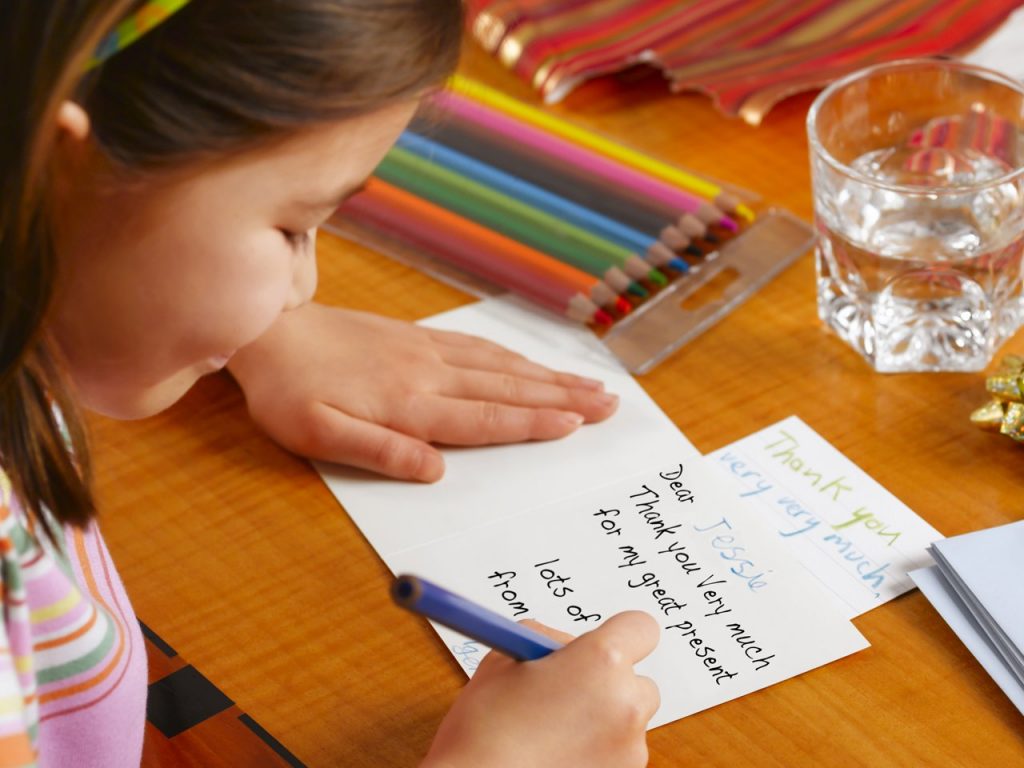
Writing a letter to a hero or role model is a way to say thank you and share admiration. It’s all about showing gratitude.
What to write:
- Tell your hero why you admire them.
- Say how they inspire you.
Benefits:
Writing letters to heroes promotes gratitude, empathy, and the articulation of admiration. It helps children develop persuasive writing skills and the ability to express their feelings respectfully.
9. Recipe Writing
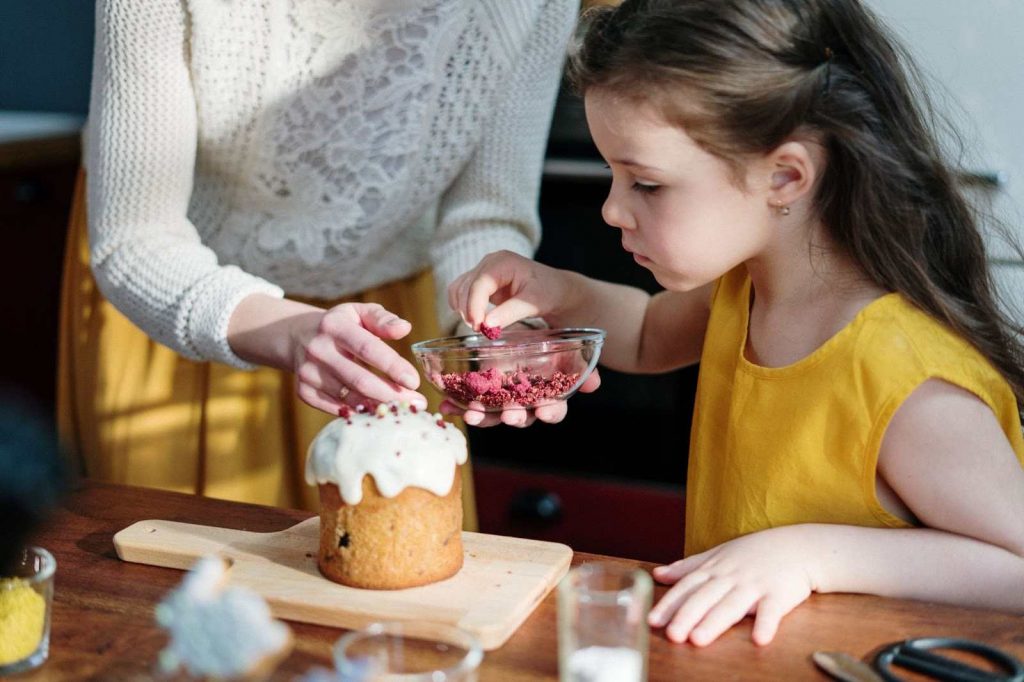
Writing recipes is like creating magic potions! It’s also a fun way to learn about measurements and following instructions.
Activity:
Write down a simple recipe, like making a peanut butter or jelly sandwich.
Benefits:
Crafting recipes enhances attention to detail and understanding of the order of operations. It teaches the importance of clear, concise instructions and reinforces basic math and measurement skills.
10. Story Cubes
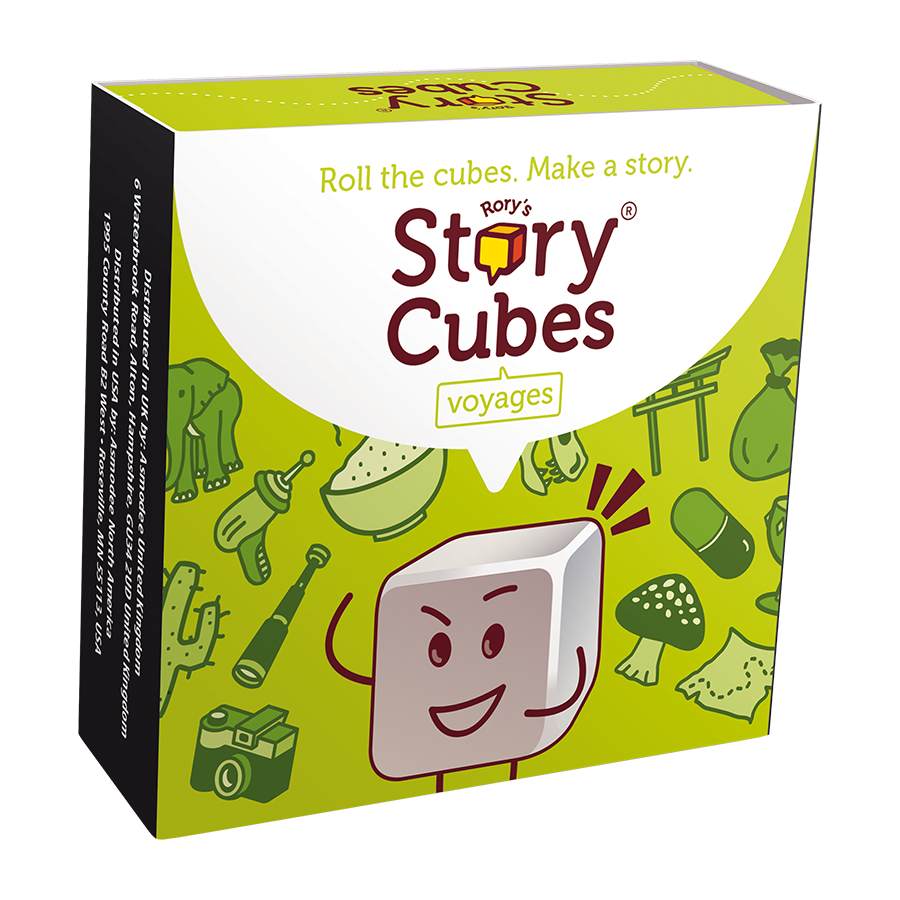
Story cubes are like dice with pictures. Roll them, and see where your imagination takes you!
How to make and use them:
- Draw pictures on cube-shaped paper or use stickers.
- Roll the cubes and create a story based on the pictures that come up.
Benefits:
Story cubes stimulate the imagination and encourage spontaneous storytelling. They help children think on their feet, connect disparate ideas, and weave them into a coherent narrative. This activity also promotes vocabulary expansion as kids search for the right words to describe the images they see.
11. Newspaper Reporter

Kids can be little reporters and learn about news writing. It’s a sneak peek into how newspapers work!
Activity:
Brainstorm: Think of an event like “Aliens Visit Local School” or “Lost City Found in Backyard”.
Details: Answer: Who? What? When? Where? Why? and How?
Headline: Create a catchy title to grab attention.
Draft: Write the story, adding ‘quotes’ from ‘witnesses’ or ‘experts’.
Illustrate: Sketch a related image or scene.
Benefits:
This activity merges news writing with creative storytelling. Kids learn the structure of news while enhancing both their factual and creative writing skills.
12. Book Reviews
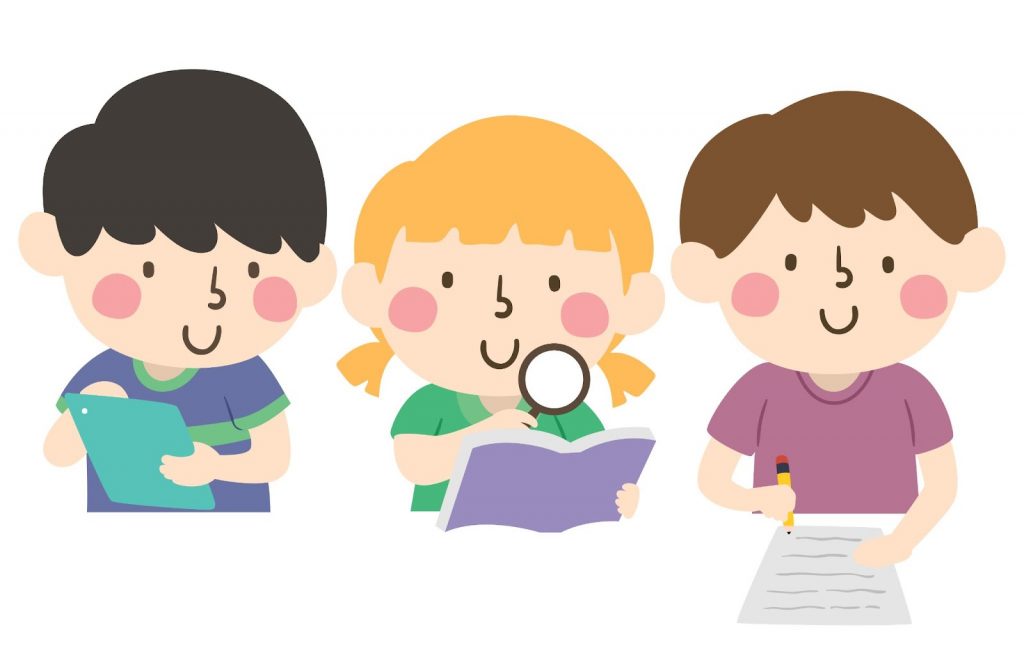
Reading is fantastic, but talking about what you’ve read is even better. It helps kids think critically and share their thoughts.
How to do it:
- Pick a book you love and tell others what you liked and didn’t like about it.
- These writing activities are like hidden treasures waiting to be discovered. Pick one, or try them all, and watch your child’s writing skills grow while having a blast!
Benefits:
Writing book reviews enhances critical thinking and analytical skills. It encourages children to form opinions, express them clearly, and engage in thoughtful discussions about literature. It also promotes reading comprehension.
Related Reading: How to Write in Cursive: A Step-by-Step Guide for Beginners
6 Benefit of Writing Activities for Students
Did you know that these fun writing activities can do wonders for your child’s growth? Let’s explore how:
1. Improves Literacy Skills
Engaging in creative writing activities fosters a deeper understanding of language and literacy. This enhanced literacy proficiency not only aids them academically but also equips them with a crucial life skill for effective expression and comprehension.
2. Improves Communication Skills
Through storytelling, journaling, and letter writing, kids learn to articulate their thoughts, feelings, and ideas coherently. They become more adept at conveying their messages, whether in written assignments at school or in everyday conversations.
3. Boosts Creativity
Creative writing activities are like playgrounds for the imagination. When children engage in storytelling, compose poems, or craft imaginative narratives, they exercise their creative muscles.
4. Enhances Critical Thinking
Many of these activities encourage children to think critically about the content they create. When they write book reviews, they must analyze the plot, characters, and themes, developing the capacity to assess literature thoughtfully. Storytelling and creative prompts compel them to structure narratives logically, considering cause and effect. These experiences foster analytical thinking, enabling kids to approach complex issues with a more discerning eye.
5. Improves Emotional Well-being
Journaling, in particular, serves as a therapeutic outlet for children to express their emotions, fears, and aspirations. It allows them to process their feelings and gain a better understanding of themselves, helping children manage stress and anxiety more effectively.
6. Cultivation of a Lifelong Skill
This can lead to a lifelong passion for literature, creative expression, and effective communication—an invaluable skill that serves them well in education, careers, and personal relationships.
In other words, the benefits of these creative writing activities extend far beyond the classroom to nurture well-rounded individuals with enhanced literacy skills, effective communication abilities, heightened creativity, and a deeper understanding of themselves and the world around them. Encouraging children to embrace these activities is an investment in their personal and intellectual growth, providing them with tools that will benefit them throughout their lives.
Related Reading: Best Reading Activities for Kids: Raising Young Readers
Conclusion
To wrap it up, these writing exercises for kids make learning fun and beneficial. These activities to improve writing skills help kids become great writers, improve their reading, and boost their creativity. By enjoying these activities, children can express themselves better and learn to tell amazing stories. So, let’s encourage our little ones to dive into this exciting world of writing. It’s not just homework; it’s a lifelong adventure where imagination and self-expression reign.
Related Reading: Easy Steps to Teach Kids to Read
Frequently Asked Questions (FAQs)
What is the 5 minute writing exercise for kids?
The 5-minute writing exercise for kids is a quick and creative activity where they write about anything that comes to mind for just 5 minutes, no rules, just free writing.
What is a fun writing game for kids?
A fun writing game for kids can be “Story Dice” where they roll dice with pictures and create a story using those images, sparking imagination.
How do you make a writing lesson fun?
To make a writing lesson fun, incorporate games, writing worksheets for kids, storytelling, or interactive prompts to engage students and make learning enjoyable.



























